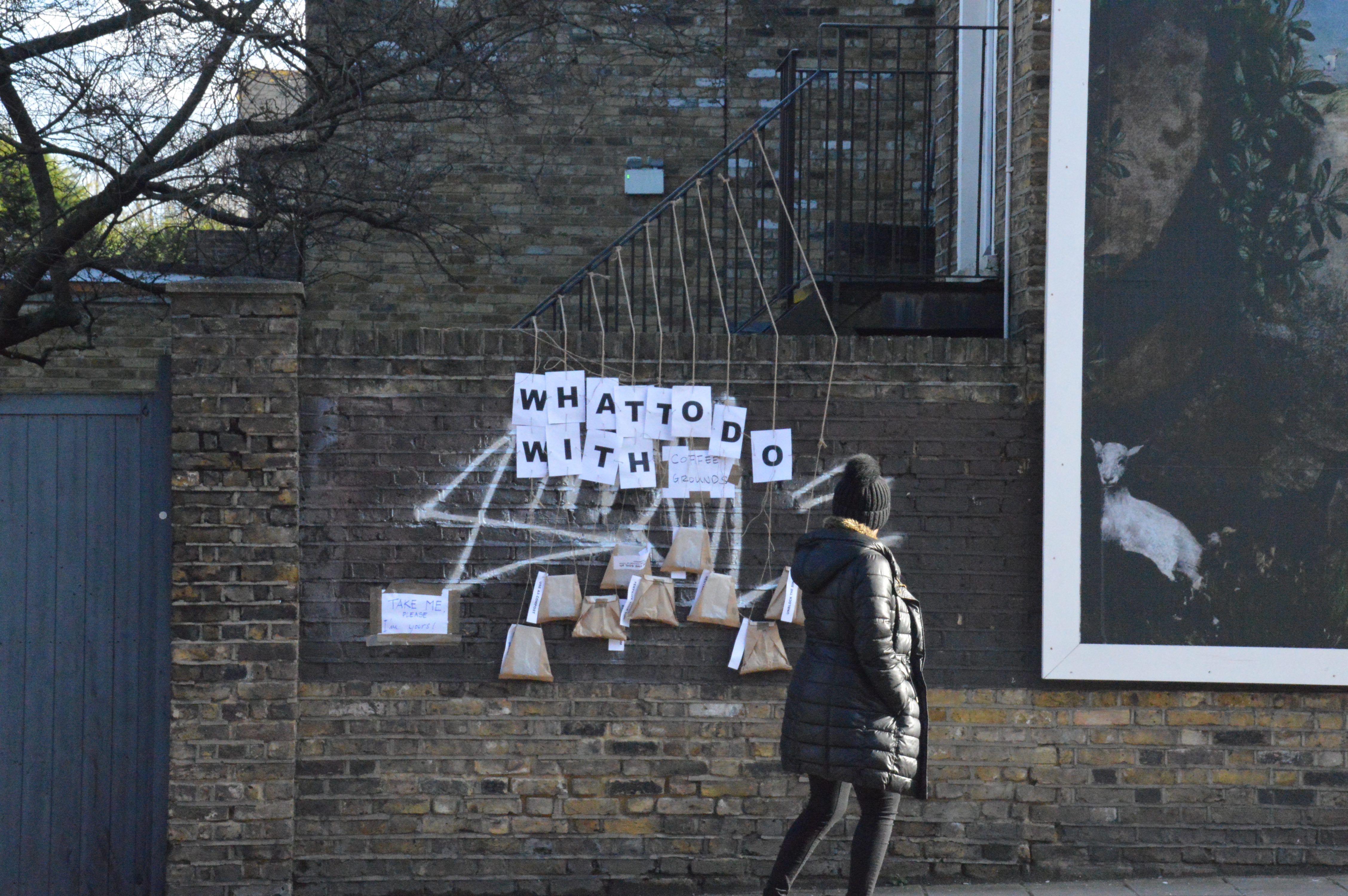

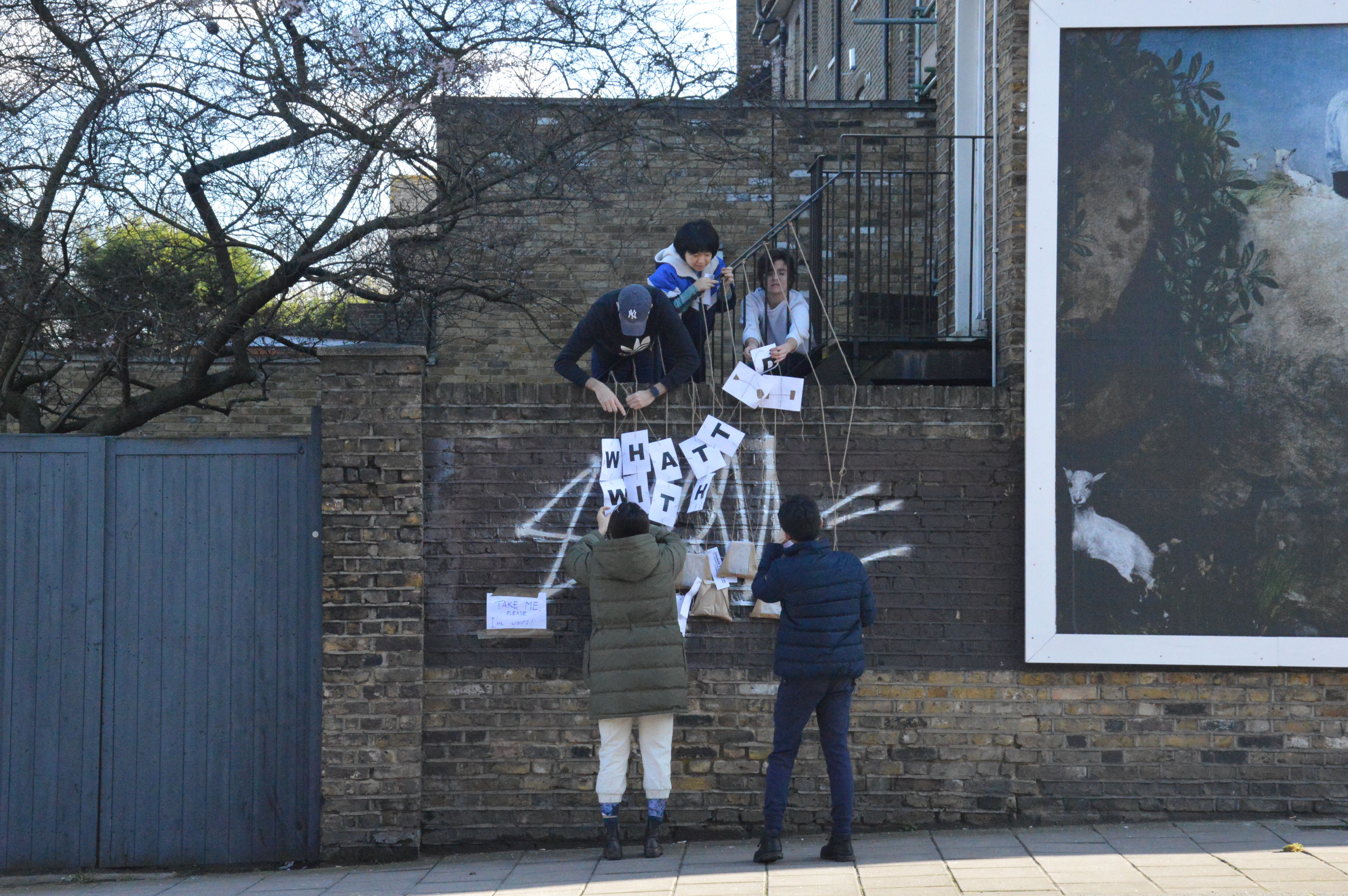
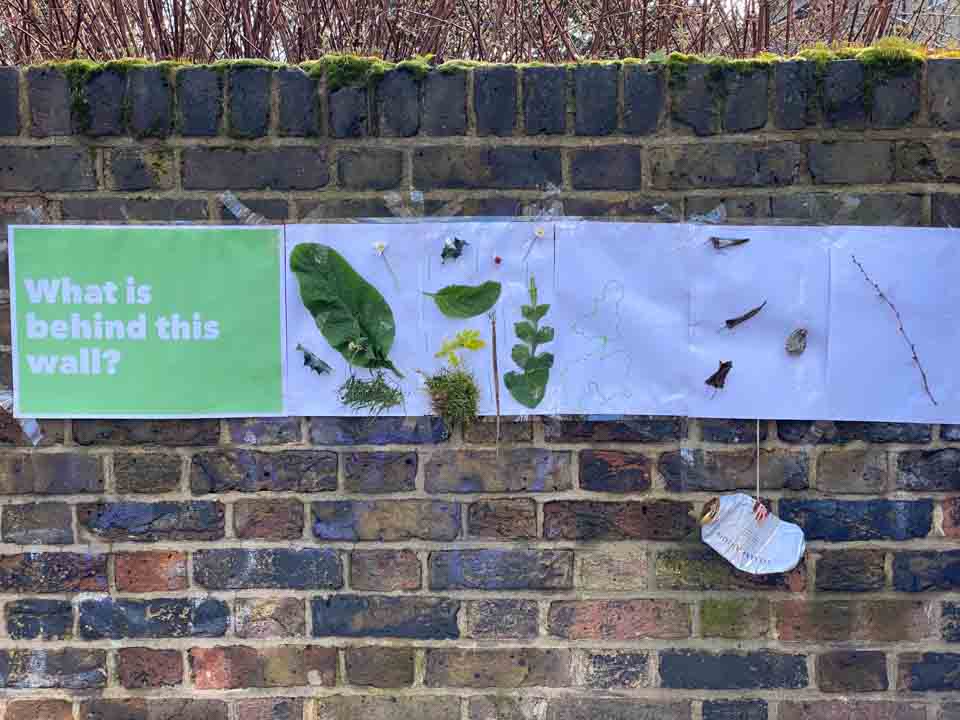
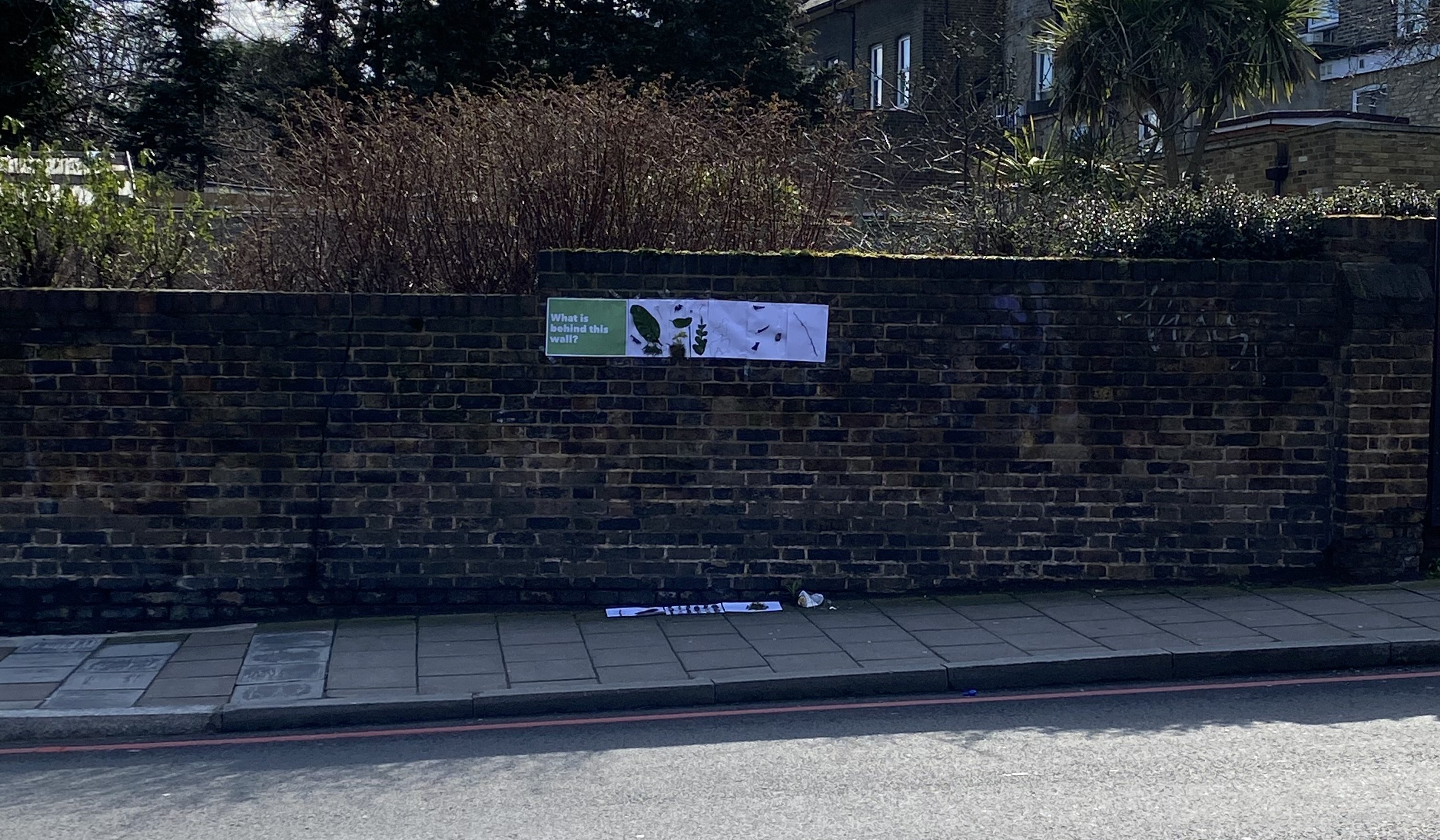
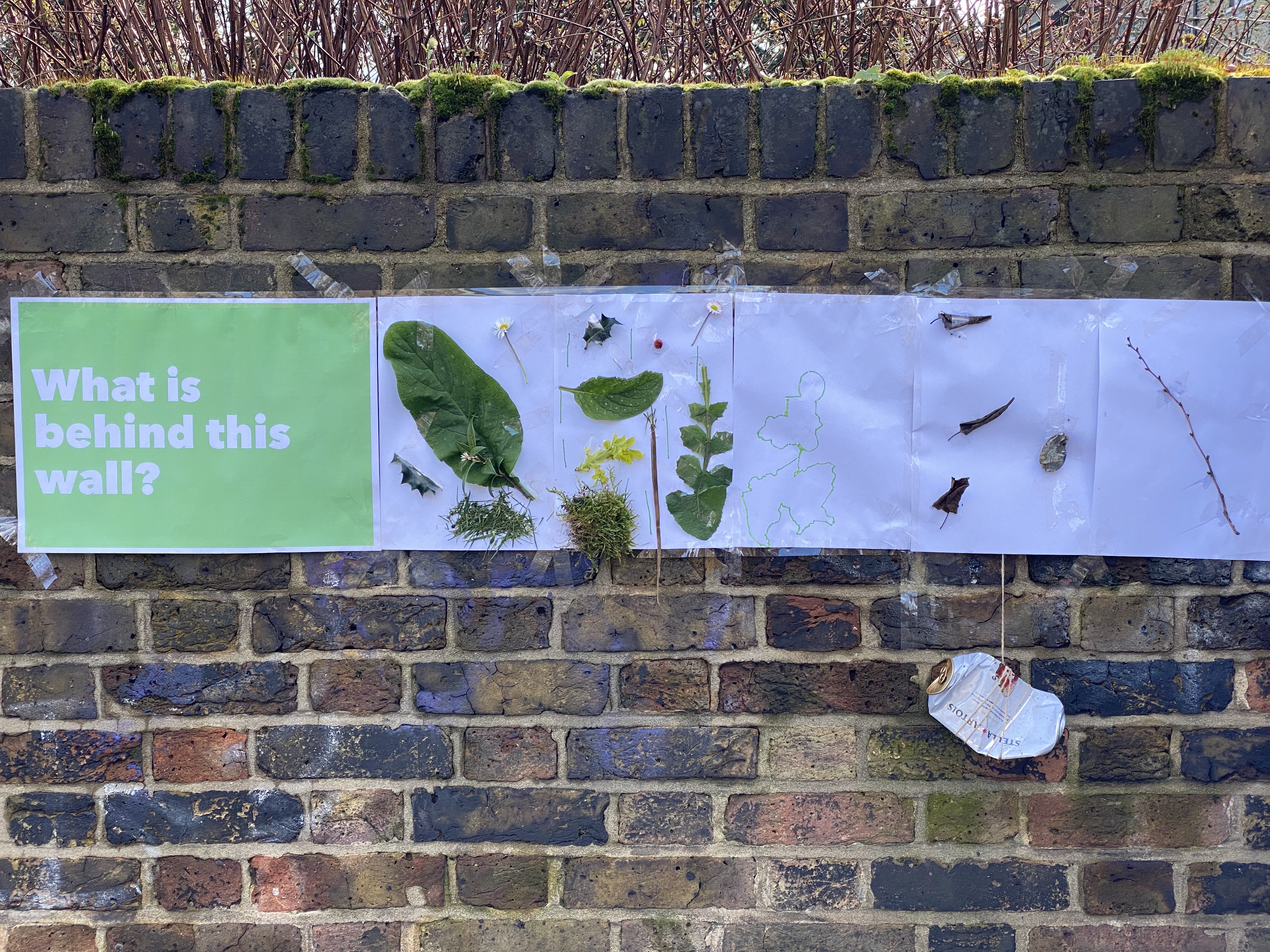
Garden #5 - 10th March 2020
The theme that we were exploring with these is community engagement while using the wall as a site. Please find the descriptions and photos below.
Graphic Design: What is behind this wall?
This experiment aims to use posters as a medium to start communicating with the community surrounding the garden. Instead of designing the posters off-site and then gluing them on the wall; we want to create them on-site, we want the design to be informed by what we see, feel, and do in the garden. Using tone prompt, we created 1 poster collaboratively and then hang it on the wall facing Parkfield Road. We went to the garden and collected anything we found relevant in the garden (moss, grass, branches, leaves, trash, soil, water……) Individually we pasted, glued assembled what we collected on a piece of paper, which latter we hung on the wall with others creating a collaborative poster answering the question: what is behind this wall.
Installation: What can we do with coffee grounds?
For this experiment, we are taking the wall and the stairs as our site to communicate with people outside the wall. Coffee grounds are picked as a medium to exchange knowledge about recycling waste and transforming it into all sorts of useful materials for our garden. We packed some coffee ground in recycled paper bags and tied them from the stairs to the outside wall. Labels were attached to each bag, suggesting various possible ways people can use coffee grounds for gardening purposes.
Performance: Can you help me, please?
One of our experiments was a performance that involved 1) a factory line of cleaners; 2) engaging passers-by for help. The group was divided into the following roles: cleaners, archivist, documenters, runners, outreach. The cleaners picked up trash in the garden, passed it to the archivist to record, and the runner passed this trash to the outreach. The outreach was at the top of the stairs beside the wall. The task was to get passers-by from outside the garden to help us remove trash from inside the garden, the outreach would pass the trash to the passer-by in a bowl who will, in turn, empty the bowl in the trash bin. The documenters documented the entire process both inside and outside the wall. From this experiment, we realized that we were able to engage most passers-by that walked past, who helped us willingly. From the archive we created, we also found objects in the garden that reflect a certain history of the site.